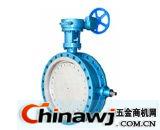Classification and application of actuators
2023-04-14 09:11:26
Actuators are divided into three categories according to their energy form: pneumatic, electric actuator and hydraulic. They have their own characteristics and are suitable for different occasions. Pneumatic actuators are a category in actuators. Pneumatic actuators can also be divided into single-acting and double-acting types: actuator switching
The execution is driven by a gas source called DOUBLE ACTING. SPRINGRETURN (single-acting) switching action is only the air source drive when the opening action, and the spring is reset when the action is closed. What are the characteristics of pneumatic actuators?
Compact dual-piston gear, rack-and-rack construction for precise meshing, high efficiency and constant output torque. Aluminum cylinders, pistons and end caps are the lightest weights compared to actuators of the same size.
The cylinder is extruded aluminum alloy and hard anodized. The inner surface is hard, strong and hard. The sliding bearing made of low-friction material avoids direct contact between the metals, has low friction coefficient, flexible rotation and long service life.
Pneumatic actuators and valve mounting and connection dimensions are designed according to international standards ISO5211, DIN3337 and VDI/VDE3845 and are interchangeable with conventional pneumatic actuators. The air supply holes conform to the NAMUR standard.
The bottom shaft mounting hole of the pneumatic actuator (according to ISO5211 standard) is double square, which is convenient for linear or 45° angle installation with square rod. The top and top holes of the output shaft are NAMUR compliant. Adjusting screws at both ends adjust the opening angle of the valve.
Double-acting, single-acting (spring-return) of the same specification. The direction can be selected according to the valve needs, clockwise or counterclockwise. Solenoid valves, positioners (opening indications), replies, various limit switches and manual operating devices are installed according to user needs.
Actuator installation and repair
Actuator installation and maintenance must comply with applicable safety regulations:
1. The pipe must be clean and free from contamination. 2. Install as needed, but it is best to have the actuator facing up and pay attention to the flow. 3. Connect the valve and pay attention to the alignment of the pipe. Remove the actuator only when the user requests it. 4. Shut off fluid and control air supply and reduce pressure in the piping system before opening or servicing the angle valve.
The operating torque of the valve plus the manufacturer's recommended safety factor / depending on the operating conditions. Actuator's air supply pressure or supply voltage actuator type double acting or single acting (spring return) and output torque at a certain source or output torque at rated voltage. It is very important that the actuator's steering and failure mode (fault opening or failure closing) correctly select an actuator. If the actuator is too large, the valve stem may be overstressed. Conversely, if the actuator is too small, the side cannot generate enough torque to fully operate the valve. In general, we believe that the torque required to operate the valve comes from the friction between the metal parts of the valve (such as the ball, the disc) and the seal (seat). According to the valve use, use temperature, operating frequency, pipeline and pressure difference, flowing medium (lubrication, drying, mud), many factors affect the operating torque
More knowledge: flange butterfly valve company website http://eccentric hemisphere valve http:// self-priming sewage pump http://pneumatic butterfly valve http://pneumatic regulating valve http://

Auto Reel Springs,Spring For Retractable Cord Reels,Flat Coil Springs,Return Coil Springs
Ningbo Yunsheng Elastic Components Co.,Ltd , https://www.yunshengsprings.com